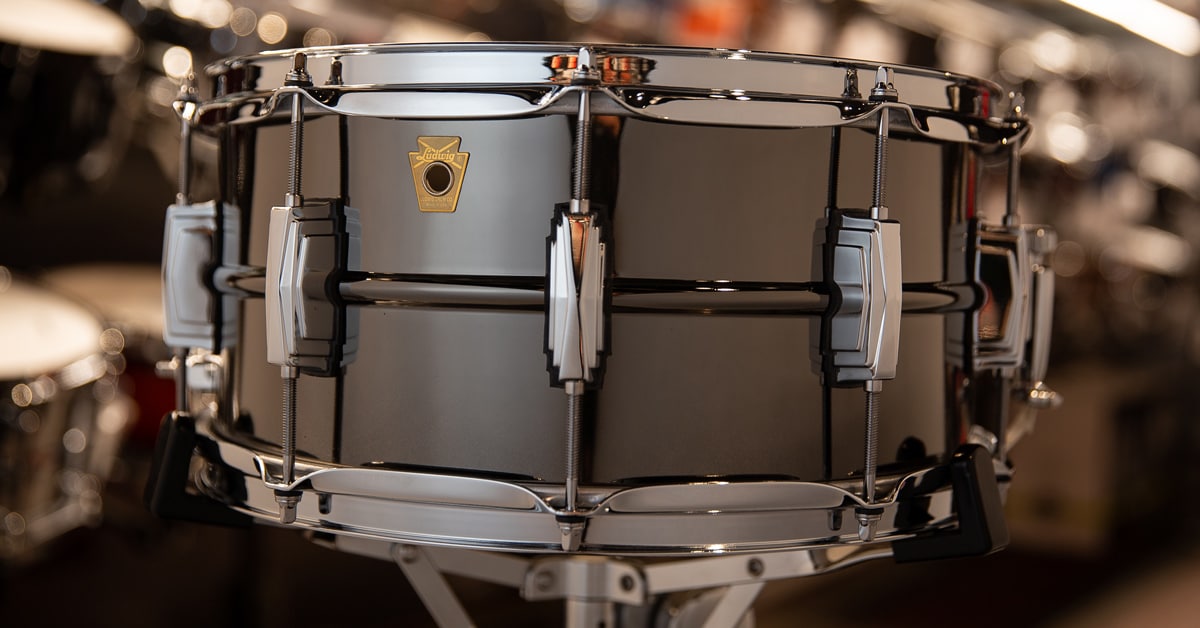It’s no coincidence that the snare drum sits at the center of the kit.
As the most expressive drum in the setup, the snare sets the foundation for every drummer’s personal sound. It’s like choosing a bandmate—pick the right one, and you’ll be amazed by what you can do together.
However, before you can zero in on the best snare drum for you, try to determine what type of snare sound would best enhance your music, your style of play and your personal tonal preference. Whether you’re seeking a specific snare drum as your main instrument for every gig or looking for a second or third snare to accommodate the diverse sonic needs of various bands and/or studio sessions, we can suggest some worthy contenders.
Of course, nothing beats playing and hearing a snare drum to get first-hand experience of whether it truly meets your needs, so be sure to visit your local Guitar Center and try out some options in person. One of our Gear Advisers can assist you with your search.
Need help choosing a full setup? Check out our drum kit buying guide and drum head buying guide.
Table of Contents
A Basic Chart of Snare Sounds
What Kind of a Snare Drum Are You Looking For?
I Want a Snare Drum With Lots of Attack
I Want a Snare with Warm, Deep Resonance
I Want a Dynamic and Expressive Snare Drum
I Want a Versatile, All-Purpose Snare Drum
I Want the Sound of a Legendary Snare Drum
Truly Vintage
Crack, Swack and Own the Gig
A Basic Chart of Snare Sounds
How much swack, crack, attack or resonance do you want? We’ll get deeper into specific snare drums and the sounds they offer, but here’s a handy chart to provide you with a rudimentary guide to shell materials and characteristics.
|
Material |
Type |
Low End |
Midrange |
Treble |
Overall Vibe |
|
Acrylic |
Synthetic |
Warm |
Warm |
Warm |
Dry, good projection |
|
Aluminum |
Metal |
Muted |
Dimensional |
Crisp |
Good sensitivity |
|
Ash |
Wood |
Muted |
Pronounced |
Pronounced |
Good attack |
|
Beech |
Wood |
Warm |
Pronounced |
Pronounced |
Focused and sensitive |
|
Bell Brass |
Metal alloy |
Tight |
Pronounced |
Pronounced |
Loud and present |
|
Birch |
Wood |
Warm |
Muted |
Pronounced |
Cuts through |
|
Brass |
Metal |
Warm |
Dimensional |
Pronounced |
Vivid and loud |
|
Bubinga |
Wood |
Warm |
Smooth |
Smooth |
Punchy |
|
Bronze |
Metal |
Pronounced |
Pronounced |
Muted |
Warm with subdued attack |
|
Carbon |
Synthetic |
Muted |
Smooth |
Smooth |
Dry and balanced |
|
Cherry |
Wood |
Muted |
Pronounced |
Pronounced |
Bright |
|
Copper |
Metal |
Pronounced |
Pronounced |
Muted |
Dark and loud |
|
Fiberglass |
Synthetic |
Tight |
Tight |
Tight |
Focused |
|
Mahogany |
Wood |
Warm |
Smooth |
Muted |
Resonant |
|
Maple |
Wood |
Slightly warm |
Smooth |
Smooth |
Balanced and versatile |
|
Oak |
Wood |
Slightly warm |
Pronounced |
Muted |
Tight with quick decay |
|
Poplar |
Wood |
Warm |
Muted |
Muted |
Rich and smooth |
|
Steel |
Metal |
Muted |
Pronounced |
Crisp |
Versatile and present |
|
Titanium |
Metal |
Slightly warm |
Smooth |
Crisp |
Focused |
|
Walnut |
Wood |
Warm |
Smooth |
Smooth |
Big and warm |
What Kind of Snare Drum Are You Looking For?
Now, let’s get into the nitty gritty. You may ask yourself, “What kind of sound do I want?” It’s not just about shell material, as there are a lot of construction and hardware details that contribute to the personality of a snare drum. The type of drum heads you prefer and how you choose to tune them—low and beefy, barking and punchy or present and bright—add to the sonic equation, as well. But let’s try to answer your question…
I Want a Snare Drum With Lots of Attack
Perhaps you’re in a rock band where those darned guitarists just love distortion and have zero awareness of that thing called a “volume knob.” Or you’re playing with a large cover band, and you want to ensure you can crack through the horn section, keyboards, percussionists and background vocalists. There are many reasons to choose a snare with attack, articulation and projection. Here are some of the best snare drums to do the job.
TAMA 50th Anniversary Starclassic Mirage Snare Drum
Why It’s Cool: This limited-edition throwback acrylic celebrates TAMA’s 50th anniversary with a bold, modern take on a rare classic.
Things to Consider:
- Delivers plenty of depth and snappy response to slice through the mix
- Perfect complement to the Starclassic Mirage 5-piece shell pack, and fits in nicely with any other kit
- Limited production run—get it while you still can
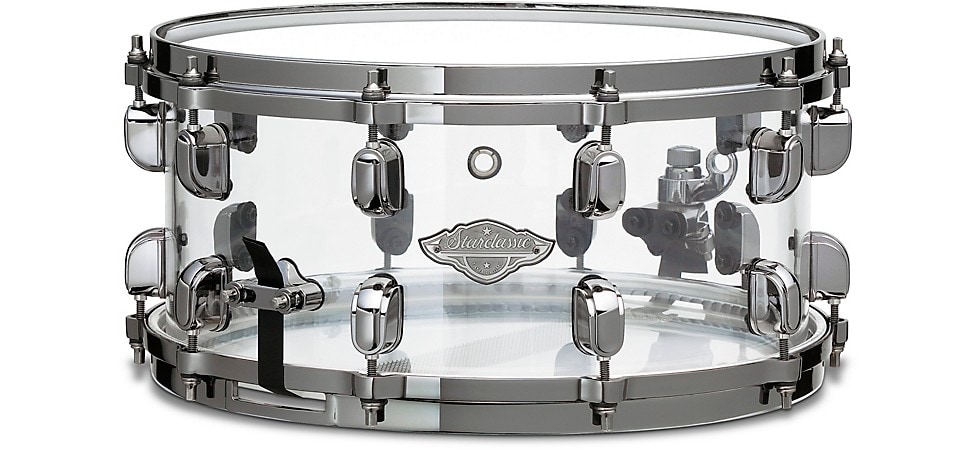
Shop Now: TAMA 50th Anniversary Limited-Edition Starclassic Mirage Acrylic Snare Drum
The TAMA 50th Anniversary Starclassic Mirage snare drum is a stunner, both visually and sonically. It’s a reissue of a coveted rarity, boasting a 5.5mm thick acrylic shell, black nickel hardware, die-cast hoops with 20 lugs and 20-strand Super Sensitive High-Carbon snare wires. The seamless 14x6.5" shell produces resonance, depth, clarity and clean sustain (no pesky overtones). The 50th Anniversary Starclassic Mirage is an excellent choice if you’re looking for a cutting snap with a hefty swack to bust through a mix without being too bright.
TAMA S.L.P. Mod Bubinga Snare Drum
Why It’s Cool: This compact powerhouse brings the natural punch of bubinga into a modern, high-impact design.
Things to Consider:
- 12x7" size provides tight, articulate pop with keen responsiveness
- Bubinga shell yields warm, deep lows with snappy attack
- Higher tuning potential makes it a perfect side snare or main snare for drummers who love a tight, funky crack

Shop Now: TAMA S.L.P. Mod Bubinga Snare Drum 12x7in. Satin Bubinga
The TAMA S.L.P. Mod Bubinga snare brings out the inherent warmth and low-end wallop of bubinga, all within a compact, highly responsive 12x7" build. Its size and tonewood factors make it a righteous partner for funk, gospel and modern fusion—as well as hip-hop, trap and other electronic-heavy genres—giving drummers a tight, cracking attack that slices right through any mix. Whether you’re using it as a main snare for intricate playing or as a trusty side snare for dynamic accents, the Mod Bubinga snare delivers a punchy, focused tone with unmistakable character.
Mapex Black Panther Persuader Snare Drum
Why It’s Cool: With a hammered brass shell and serious projection, this kitten effortlessly slashes right through even the densest mixes.
Things to Consider:
- Dishes out a loud, aggressive tone with tons of presence
- Lightweight, die-cast Sonic Saver hoops leave your tone unimpeded
- Heavier than wood snares, so consider the weight if you’re gigging regularly
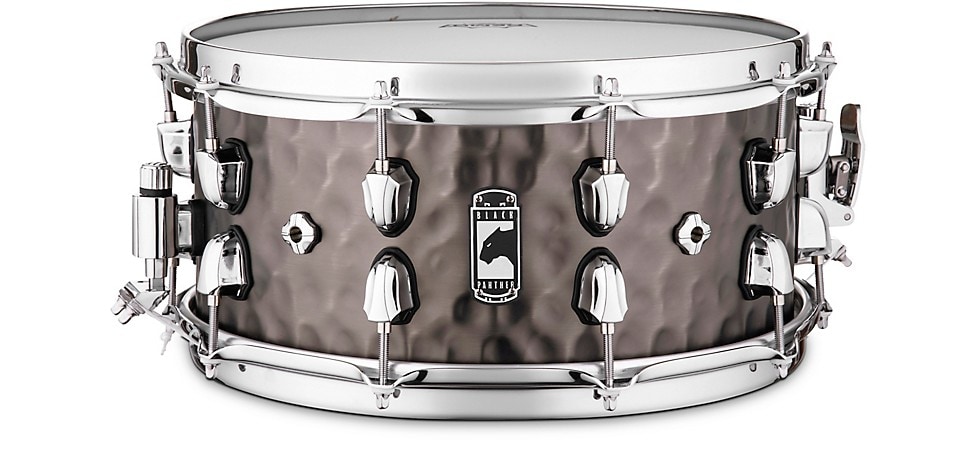
Shop Now: Mapex Black Panther Persuader Snare Drum
The MAPEX Black Panther Persuader excels at projection. It can cut through the noise of a raging band and command the rhythm. The brass shell is 1.2 mm thick and hammered across the entire surface. The hammer marks create more surface area, putting more vibrating brass in contact with the air and squeezing that much more tone out of the shell at high volumes. They also look very cool. Another benefit is the Sonic Saver hoop design, which has the rounded shape of die-cast without the added weight, letting the drum sing while taking it easy on your sticks.
Orange County Drum & Percussion Maple Ash Snare Drum
Why It’s Cool: Channel your California cool with a maple and ash blend for a crisp, articulate attack, plus abundant warmth underneath it all.
Things to Consider:
- Maple/ash tonewood blend yields a balanced tone with a bright crack and warm low end
- 13x7" size makes it higher pitched and super responsive for ghost notes
- Offers a unique, impressive option without breaking the bank
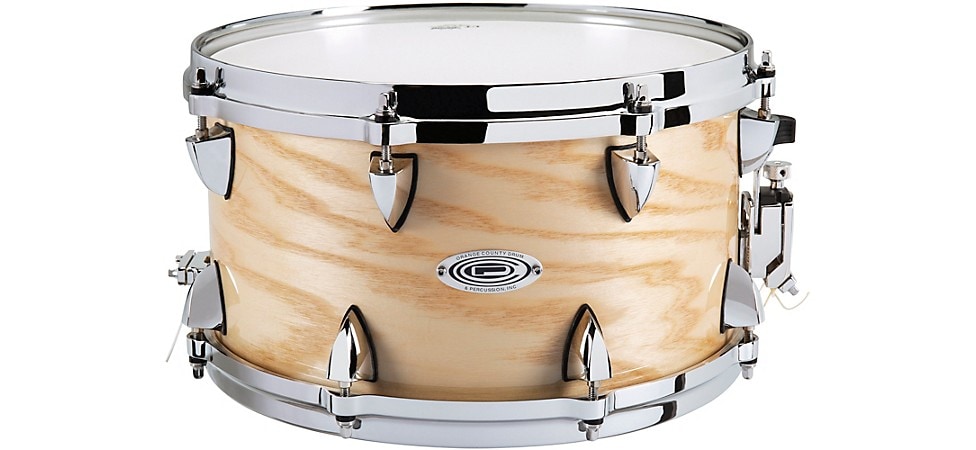
Shop Now: Orange County Drum & Percussion Maple Ash Snare Drum
With its 7-ply maple and ash shell, the Orange County Drum & Percussion Maple Ash 13x7" snare delivers a taut wallop and focused mids that can cut through a mix with precision. While a 13x7" snare typically doesn’t produce the deep lows of a 14x6.5", it can hold higher tunings without choking out and also provide excellent stick rebound. In other words, you can really pop this pup and get all of the attack and sensitivity you’ll probably ever need. This is also a snare that comes in at a very nice price.
Yamaha Stage Custom Birch Snare Drum
Why It’s Cool: This Stage Custom snare delivers Yamaha’s signature birch clarity and punch in a budget-friendly package.
Things to Consider:
- 100% birch shells naturally give a balanced, full-bodied sound
- Classic 14x5.5" size makes it a fine fit for everything from jazz to rock
- At well under $150, this snare punches above its weight
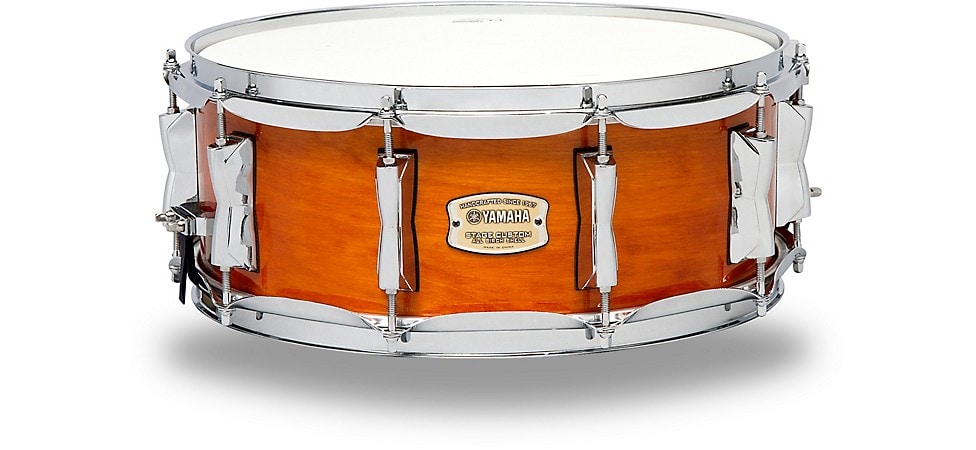
Shop Now: Yamaha Stage Custom Birch Snare Drum
Bust through on a budget with the Yamaha Stage Custom snare. Birch definitely slashes through a thick music mix, and the Stage Custom’s sleek, 6-ply 14x5.5" shell delivers volume, resonance and enhanced highs. As a bonus, the snare’s lovely honey-amber finish and old-school badge mimic the classic kits played by iconic Yamaha artists.
I Want a Snare with Warm, Deep Resonance
Cutting right through a dense music mix isn’t the only way to command attention. Sometimes, a warm, taut and funky thwack can move the groove just as effectively as an articulate crack. Here are some of the top snare drum picks for those who travel on the warmer side of tone.
Zildjian 400th Anniversary Limited-Edition Alloy Snare Drum
Why It’s Cool: Made from the same exalted B20 alloy as Zildjian’s cymbals, this rare, Aaron Latos-codesigned snare sings with rich resonance.
Things to Consider:
- B20 bronze-alloy shell gives it a sophisticated tone unlike any traditional metal snare
- Only 400 were made, making this a collector’s piece in addition to a very playable drum
- Exceptional craftsmanship and materials don’t exactly make it budget friendly
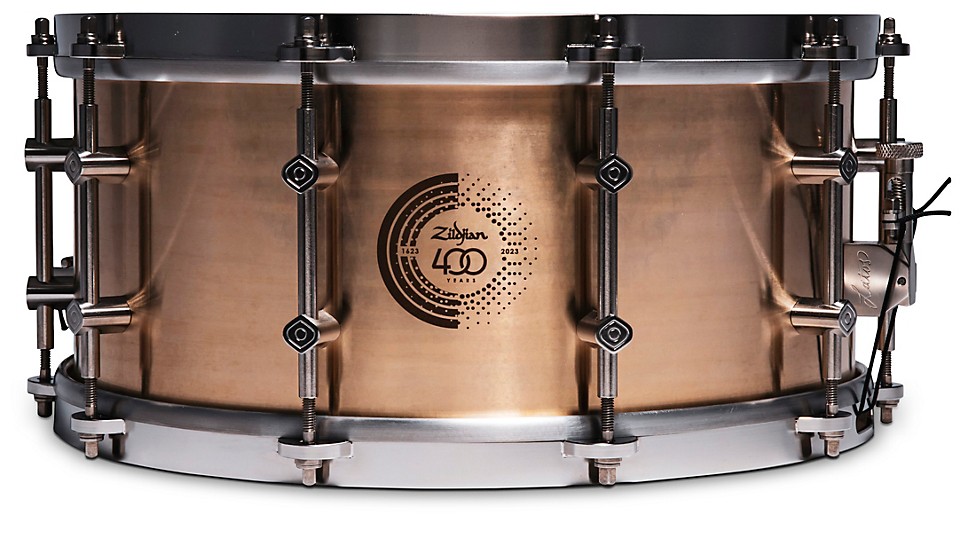
Shop Now: Zildjian 400th Anniversary Limited-Edition Alloy Snare Drum
For its 400th Anniversary Limited-Edition Alloy snare, Zildjian clearly went all out. The company’s B20 bronze alloy—which has been used to craft its cymbals for centuries—is the material utilized to craft the 400th Anniversary model’s seamless shell. In addition, boutique snare designer Aaron Latos collaborated with Zildjian on this one-of-a-kind bronze beauty, and he numbered and signed every one of the 400 snares produced for the limited-edition run. This is an opulent drum by every measure, but for those who love refined artistry and exceptional tone, the Zildjian 400th Anniversary Limited-Edition delivers across the board. It looks like a supermodel, and its bronze alloy produces a warm, resonant thwack and articulate mids.
PDP Dark Stain Maple and Walnut Snare Drum
Why It’s Cool: Maple meets walnut for a deep, warm snare with matching wood counter hoops, one-of-a-kind looks and an earthy tone.
Things to Consider:
- 10 plies of maple covered in a wondrous walnut veneer
- Outfitted with Dual-Turret lugs, DW MAG throw-off and chrome snare wires
- Perfect for drummers who want boutique vibe without the exorbitant price
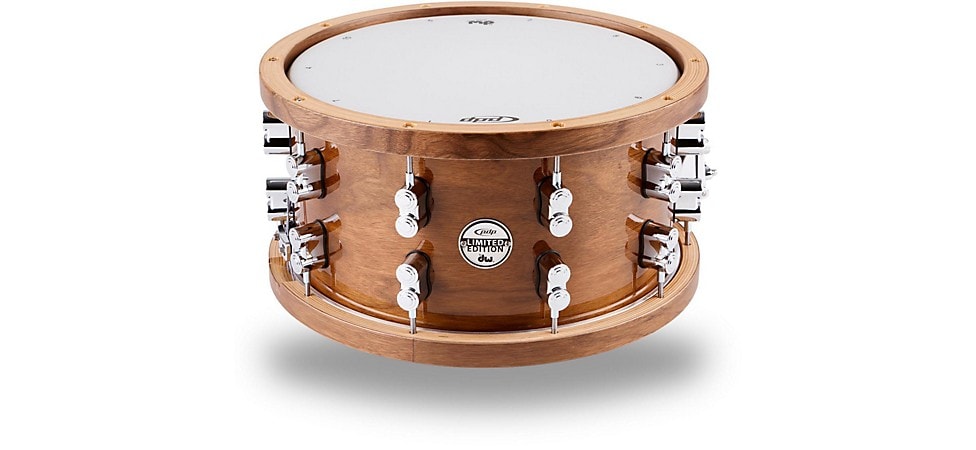
Shop Now: PDP by DW Dark Stain Maple and Walnut Snare Drum
The PDP Dark Stain Maple and Walnut snare is another limited-edition beauty—and made even more striking with its matching wood rims. The combination of maple and walnut is a good one for players seeking warmth and attack. The 10-ply shell goes for the balanced frequency range of a maple core and then lays on inner and outer plies of walnut to achieve a big bottom. The PDP Dark Stain snare looks like something you’d find in an art deco parlor, while its rich tone evokes the exuberance of the Jazz Age.
TAMA Starclassic Walnut/Birch Snare Drum With Outer Cedar Ply
Why It’s Cool: This tonewood-amalgamation snare brings the best of walnut, birch and cedar together for a punchy, opulent tone and a smooth finish.
Things to Consider:
- Walnut core delivers low-end warmth, while birch outer plies add attack and clarity
- The cedar outer ply gives it a unique look with a subtle sonic sweetness
- Superb all-arounder with an artisan touch
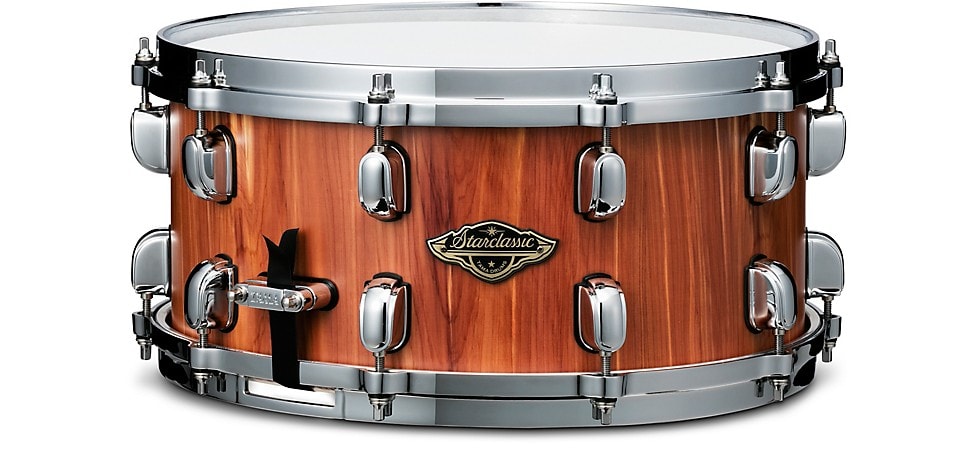
Shop Now: TAMA Starclassic Walnut/Birch Snare Drum
The TAMA Starclassic Walnut/Birch snare with cedar outer ply brings a trio of woods together to create a combo plate of warmth and depth. First up is a walnut core that provides deep resonant lows. Next, come thin birch plies that add cut and attack. The shell is topped off with an outer ply of cedar that mellows out the sharpness of the birch and balances the overall tone. The result is a snare that emulates the lively thud and refined crack that defined classic snares of the ’50s and ’60s.
Gretsch Drums Walnut Stave Snare Drum
Why It’s Cool: A handcrafted stave-shell snare that delivers massive projection, woody warmth and boutique-level craftsmanship—pure Gretsch magic.
Things to Consider:
- Stave construction gives it more punch and depth than standard ply shells
- Walnut provides earthy lows and rich midrange with a dry, articulate attack
- Built for drummers who want bold tone, boutique aesthetics and mega dynamic range

Shop Now: Gretsch Drums Walnut Stave Snare Drum
Gretsch is no stranger to premium snare design, but this walnut stave snare kicks things up a notch. Stave-shell construction offers enhanced resonance and projection compared to traditional ply drums, giving you thunderous smack with snappy, woody articulation. Whether you’re laying down deep, old school-inspired backbeats or digging in for rimshots that explode from the kit, this snare has the rich character and vast dynamics to knock your next gig out of the park.
I Want a Dynamic and Expressive Snare Drum
For some styles of music, it’s typically more appropriate to have a snare that acts like a battering ram, and just keeps the groove pounding away. But that style probably won’t win you many friends—or future clients—if you’re backing a singer-songwriter, adding percussive color to a folk act, or playing trad jazz. For gigs like those, you likely need a snare that can express sensitivity and dynamic interest—but without disappearing entirely from the mix. Here are some of our most popular responsive snare drums for more musically delicate situations.
Ludwig Universal Series Black Brass Snare Drum
Why It’s Cool: This black brass snare builds upon Ludwig’s renowned Black Magic series for a drum with endless dynamic versatility.
Things to Consider:
- 1 mm brass shell projects a warm yet cutting tone that sits nicely in the mix
- Newly designed P88I throw, cast P35 butt plate and slightly heftier tube lugs set this apart from the Black Magic series
- Fantastic workhorse snare for drummers who need a reliable, all-genre drum
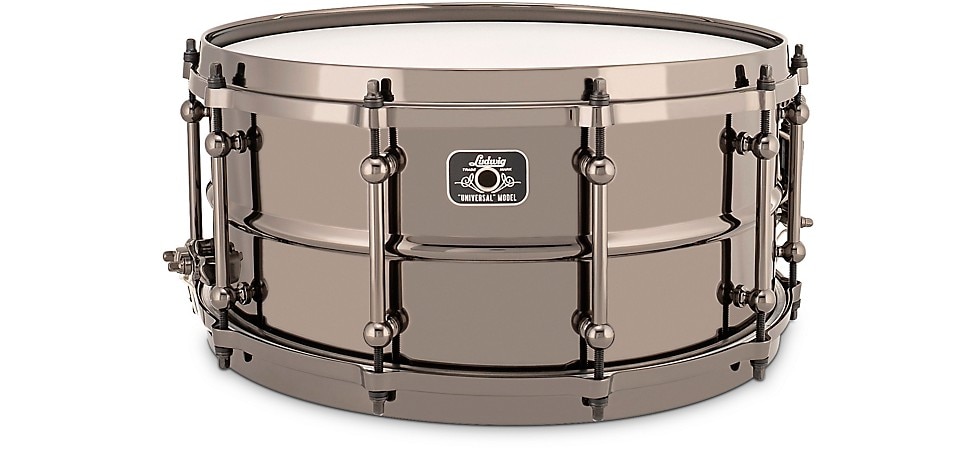
Shop Now: Ludwig Unviersal Series Black Brass Snare Drum
The Universal Series Black Brass snare drum is relentlessly versatile chameleon. Slam into the Black Brass, and it will produce aggressive mids with expansive projection. Play softly, and the flavor is warm with a delicate attack. Ghost notes are voiced clearly. You can have a ton of fun with the dynamic versatility of the Black Brass by playing tasty, almost imperceptible Bernard Purdie-style strokes, and then bashing out a ferocious snare roll a la Dave Grohl.
Gretsch Drums Black Nickel Over Steel Snare Drum
Why It’s Cool: A black nickel-over-steel shell imparts classic Gretsch attack and plenty of bright, crisp power.
Things to Consider:
- Steel shell gives it a naturally loud, piercing edge with strong projection
- Black nickel plating gives it rugged durability with a sleek aesthetic
- Ideal for drummers looking for a responsive, high-energy snare with razor-sharp cut
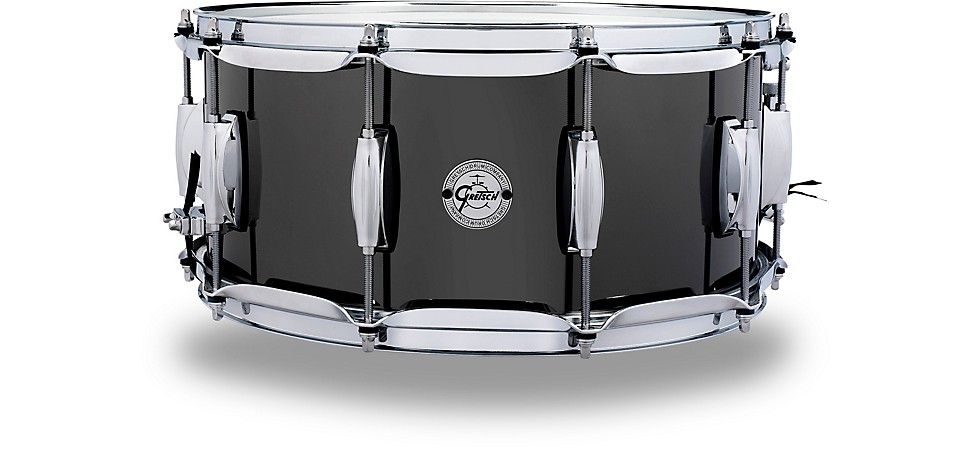
Shop Now: Gretsch Drums Black Nickel Over Steel Snare Drum
The Gretsch Drums Black Nickel Over Steel Snare pairs a steel shell with a nickel coating. Steel can be very dynamic and present, and nickel plating is typically good for dampening overtones and harmonics, so the combination is well suited for producing tones from sharp and cutting to fat and punchy, depending on your approach. You can change things up even further by playing rimshots on the Black Nickel Over Steel’s 2.3mm, triple-flanged hoops to unleash delightfully savage clangs with lots of sustain.
DW Performance Series Steel Snare Drum
Why It’s Cool: Flaunting a beadless 1 mm rolled aluminum shell, it slugs a haymaker-like attack and sings with musical overtones.
Things to Consider:
- Steel shell provides a sharp, articulate hit that shines in live settings
- Made in DW’s California Custom Shop with high-quality materials and construction techniques
- 14x5.5", 14x6.5" and 14x8" sizes available
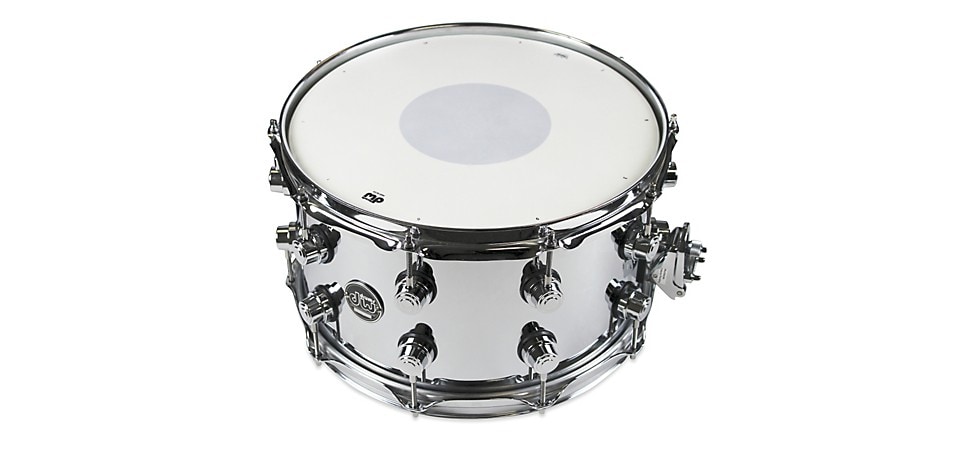
Shop Now: DW Performance Series Steel Snare Drum
The DW Performance Series Steel Snare brings out the keen brightness and coherent midrange of steel, but the sound is tamed slightly by its thin 1mm shell, which makes the drum more sensitive to subtle playing. The tone is complex without being ringy, so you can negotiate a number of dynamic and sonic shifts simply by adjusting your drum strokes. If you like tuning your snare to the music at hand, DW’s True-Pitch tuning rods allow fine adjustments and are resistant to detuning. It has nothing to do with expressiveness, of course, but the chrome finish is elegant and eye catching.
Mapex Black Panther Atomizer Snare Drum
Why It’s Cool: With its 2 mm aluminum shell and impressive resonance and low end for its depth, this snare can easily pounce its way over a thick mix.
Things to Consider:
- Stainless steel shell offers a controlled, dry sound with minimal overtones
- Sonic Saver design offers a happy medium between die-cast and triple-flange hoops
- 14x5.5" dimensions make it a smart go-to for various musical styles
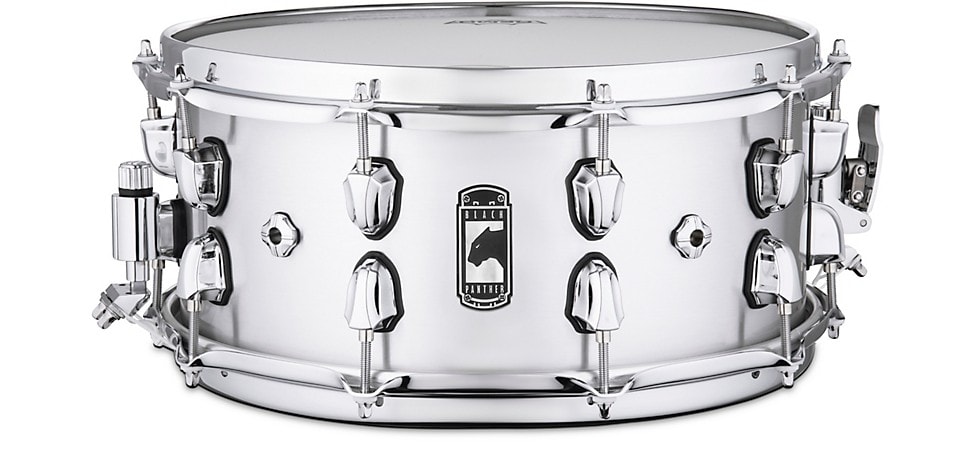
Shop Now: Mapex Black Panther Atomizer Snare Drum
True to the precision that aluminum snares can deliver, the Mapex Black Panther Atomizer is built for articulate drummers looking to spotlight the dynamic nuances of their playing. Its thin 2mm shell accentuates attack, while retaining the low end found in 14x6.5" snares. The Atomizer also sports Mapex’s proprietary Sonic Saver hoops—a clever compromise between triple-flange and die-cast designs. These steel hoops are folded inward for a round shape, producing a drier sound than triple-flange, while producing more resonance than die-cast.
DW MFG True-Cast Bronze Snare Drum
Why It’s Cool: This extremely limited bronze snare hails from the DW California Custom Shop, and flaunts a host of forward-thinking appointments that unapologetically crush conventional drum-making wisdom.
Things to Consider:
- Includes a limited-edition DW MFG flight case by Calzone
- Limited to just 100 snares worldwide
- A truly matchless design with a price to match

Shop Now: DW MFG True-Cast Bronze Snare Drum 14x7in
Codesigned by DW drummer extraordinaire and collector Dave Elitch, the MFG True-Cast 14x7" bronze snare is a work of art in and of itself. Featuring a unique concaved design that goes from 5 mm at the edges to 3 mm at the center, its sand-cast bell bronze shell wields an incredible low-end gravitas along with its dynamically expressive response across various tunings. It also sports specially machined True-Cast bronze counter hoops, mini turret lugs, mini MAG throw-off and True-Pitch tension rods, all of which will develop an exquisite patina with time.
I Want a Versatile, All-Purpose Snare Drum
We’ve probably all seen professional drummers on YouTube demoing techniques or drum gear in their personal studios, and surrounded by racks upon racks of different snare drums. (If you want a “wow” moment, get a peek at The Drum Doctor’s snare collection during his play-through of the TAMA Mastercraft Bell Brass Snare.) Well, not all of us can have a different snare drum available for each and every musical context and application. Many of us likely want one single, versatile snare drum that can make the scene on countless gigs and get it done. Here are some of our top snare drum picks for terrific “all-rounders.”
Pearl GPX Limited-Edition Snare Drum
Why It’s Cool: This limited-run yet beginner-friendly snare swanks a poplar and maple blend, conjuring a warm, resonant tonality with vintage vibes.
Things to Consider:
- The combination of poplar and maple offers a well-rounded sound with a slightly pronounced midrange
- Equipped with a smooth throw-off and 30-strand snare wires
- Its ever-stylish Putty Gray lacquer finish is only around for a fleeting moment
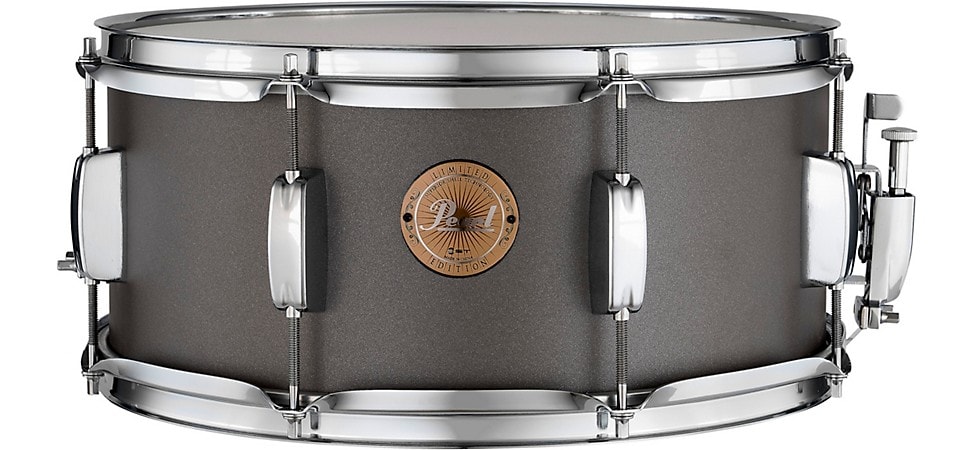
Shop Now: Pearl GPX Limited-Edition Snare Drum Putty Gray
“Versatility” doesn’t have to be defined as “expensive.” The beginner-friendly and affordable Pearl GPX Limited-Edition snare delivers an even, consistent response at any playing volume and tuning. The 14x6.5" GPX features a 6-ply hardwood shell and 30-strand snare wires, resulting in a snare that can produce everything from a crack to a swack to a meaty thud and beyond.
SJC Drums Pathfinder Series Snare Drum
Why It’s Cool: This Pathfinder snare features six alternating plies of mahogany and maple, yielding a gorgeous, full-bodied character at an impressive value.
Things to Consider:
- Combines the warmth of mahogany with the brightness of maple
- Available in eye-catching Moon Blue, Fresno Red and Galaxy Grey satin finishes
- Competitively priced for aspiring drummers
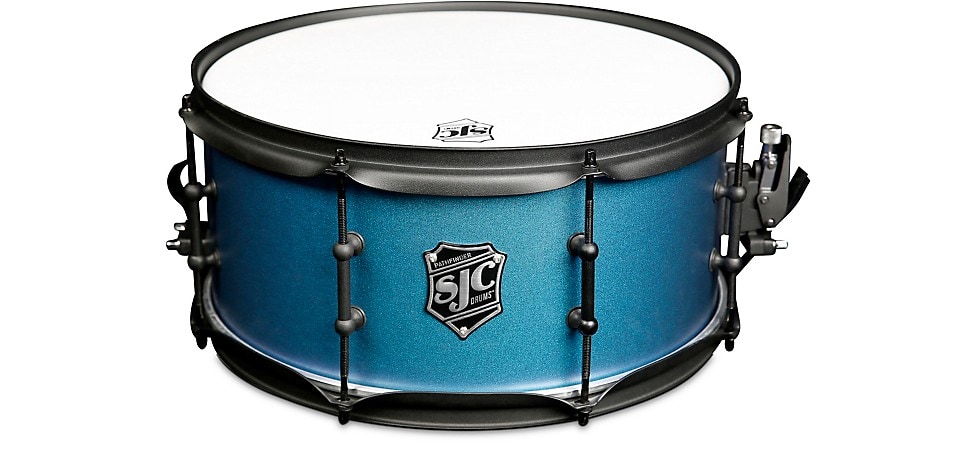
Shop Now: SJC Drums Pathfinder Series Snare Drum Moon Blue
We’re not solely focusing on “nice price” options, but the SJC Drums Pathfinder Series Snare Drum is another model that delivers versatility and value. The 7-ply maple/hybrid wood SJC Pathfinder can serve up everything from your most nuanced grace notes to full-on, battering ram strokes, and all of the dynamics in between. The 14x6.5" Pathfinder is a great choice for a student endeavoring to learn a bunch of styles, or a cover-band drummer who must negotiate a number of hits from rock to country to funk, R&B and pop.
Pork Pie Big Black Brass Snare Drum
Why It’s Cool: This retro-vibed beaded brass snare serves up a fat, punchy crack with a classic look that seamlessly complements any kit.
Things to Consider:
- Budget-friendly alternative to more aspirational, industry-standard brass snares
- Precisely engineered 2.3 mm steel hoops are great for rimshots and cross sticks
- Exceptionally versatile—tune it low or high as you need to suit your style
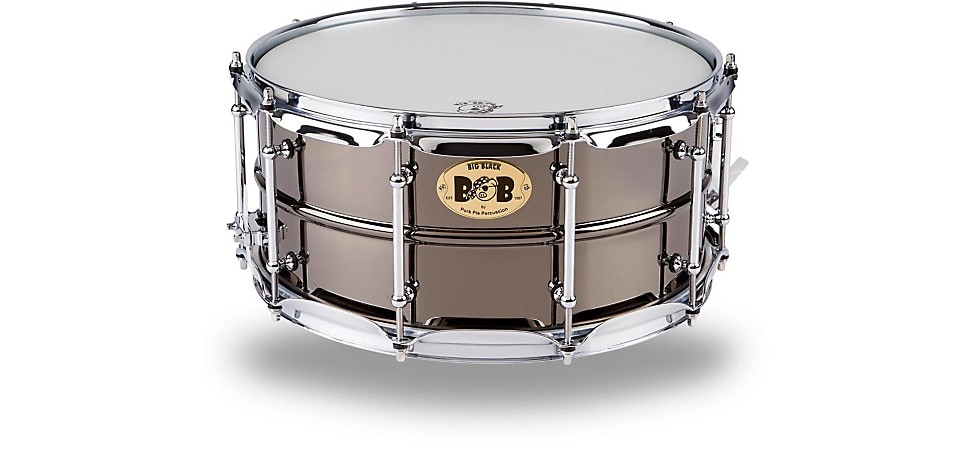
Shop Now: Pork Pie Big Black Brass Snare Drum
One of the top-reviewed snare drums on our website, the Pork Pie Big Black Snare Drum offers a well-rounded tonal character with a range that’s phenomenal. The brass shell sounds fantastic when tuned low for impactful punch, or way up high for fast-cutting attack. The Big Black Brass’ sensitivity, projection and volume make it a “Swiss Army knife” snare that can easily fit into any musical style or acoustic environment.
SONOR Kompressor Aluminum Snare Drum
Why It’s Cool: Featuring a seamless 1.2 mm aluminum shell, this snare delivers a dry, focused sound with a lustrous brushed finish.
Things to Consider:
- Crisp, articulate tone with quick decay gives your mix a great starting point from the get-go
- SONOR’s cutting-edge Optimum Shell Measurements (OSM) let your drum heads ring more freely
- Durable aluminum construction affords exceptional longevity and consistent performance gig after gig
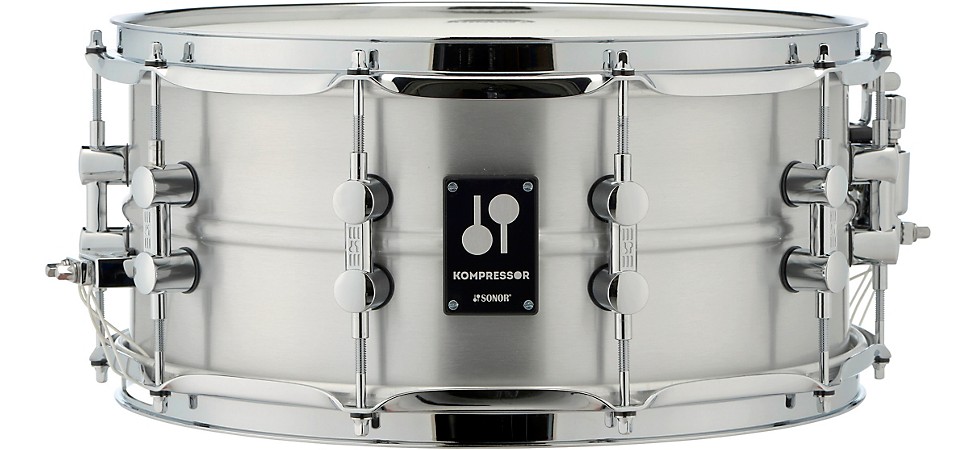
Shop Now: SONOR Kompressor Aluminum Snare Drum
The SONOR Kompressor is a 14x6.5" aluminum snare that offers exceptional sensitivity for navigating a variety of musical styles, as well as various studio and stage situations. (It also comes in 14x8" and 14x5.75" sizes.) The Kompressor effortlessly handles low, medium and high tunings to match whatever tone you’re going for, and it keeps pitch consistent with SONOR TuneSafe lugs.
TAMA Starphonic Spruce Snare Drum
Why It’s Cool: A rare spruce shell construction gives this snare a warm, open resonance that stands apart from traditional wood snares.
Things to Consider:
- Spruce shell provides a warm, airy tone with controlled resonance
- Crafted in Japan with uniquely designed Starphonic lugs and hoops
- Great for drummers seeking a distinctive wood snare with enhanced articulation

Shop Now: TAMA Starphonic Spruce Snare Drum 14x6in
Another TAMA star, the 14x6" Starphonic Spruce stands out in the world of wooden snares with its spruce shell, a rarity that offers lush warmth and deep resonance while maintaining quick response. And the Starphonic rings true to TAMA’s reputation to cutting-edge hardware. Its innovative hardware system, comprising eight Freedom Lugs, grooved hoop and linear-drive strainer, provides consistent tension and tuning stability, ensures this snare is a reliable kit centerpiece whether you’re in session or on stage. With its luxurious yet understated finish starring a classy center stripe, its aesthetic nuances are befitting of a snare that captures all the intricacies of your grooves.
I Want the Sound of a Legendary Snare Drum
We’re sure that more than a couple of you have pined for, desired and sought out a particular instrument because your musical heroes played the very same model. The yearning can get even more intense if you discover that not only was that instrument chosen by an adored and respected musician, but it was also used on many of your favorite tracks—whether played by a hero or others. Legends tend to become legends for good reason, and, in the case of snare drums, it’s difficult to find fault with models that have graced innumerable hits, albums and other inspired tracks through modern musical history. So, if you want a bit of legend to caress your recordings and gigs, check out these iconic snare drums.
TAMA 50th Anniversary Mastercraft Bell Brass Snare Drum
Why It’s Cool: Another limited reissue celebrating TAMA's 50th anniversary, the iconic Bell Brass model has been coveted for its powerful, cutting character since its ’80s debut.
Things to Consider:
- Rare rerelease of a legendary snare used on iconic hard rock and metal recordings
- 3 mm cast bell brass shell delivers exceptional volume and projection
- Price reflects its hefty build and considerable legacy
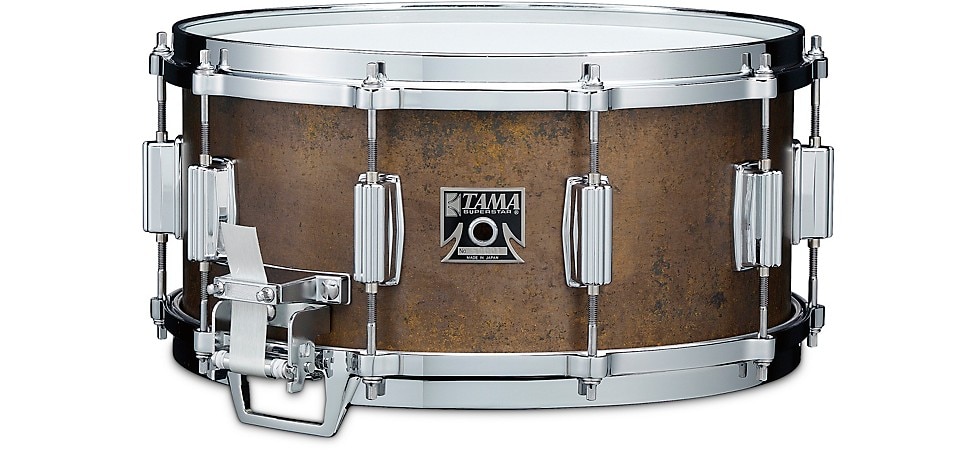
Shop Now: TAMA 50th Anniversary Mastercraft Bell Brass Snare Drum
Los Angeles drum collector, rental specialist and tech The Drum Doctor (Ross Garfield) calls it, “One of the best snare drums in the history of the world.” It earned the title by owning so many sessions—from Metallica’s “Black Album” to Nirvana’s Nevermind and countless other historic tracks—that it was nicknamed “The Terminator.” The 50th Anniversary Mastercraft Bell Brass snare drum—commemorating a half century of TAMA (1974–2024)—is a faithful take on the original that burst on the scene in 1980. The Bell Brass is a very loud snare with a penetrating crack that also serves up a thick, meaty low end. Learn more by reading our article, The History and Return of the TAMA Bell Brass Snare Drum.
Ludwig Black Beauty Snare Drum
Why It’s Cool: The Black Beauty has been a staple of drumming royalty for decades, offering legendary depth and cut.
Things to Consider:
- Seamless brass shell gives it a warm, complex tone with plenty of oomph
- Several Black Beauty variants to choose from
- A must-have for drummers looking for one of the most famous snare tones in history
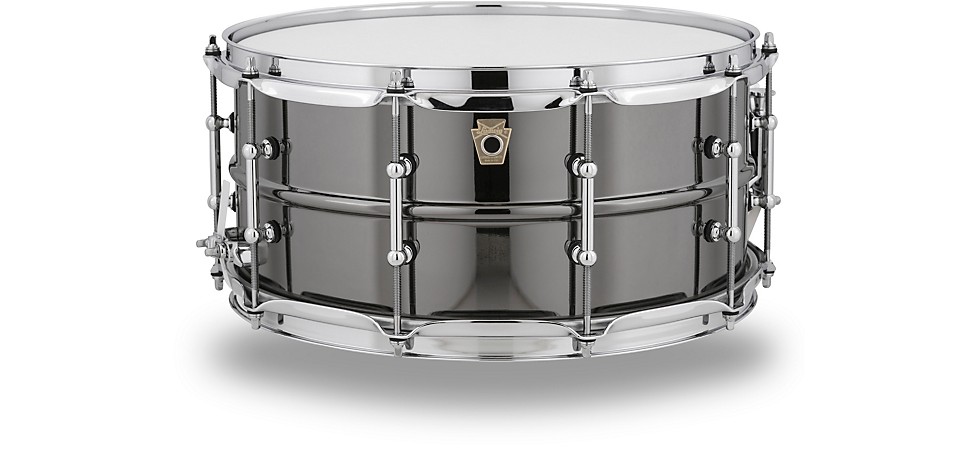
Shop Now: Ludwig Black Beauty Snare Drum
There’s a long-standing (yet benevolent) sibling rivalry between the Ludwig Black Beauty and Ludwig Supraphonic snare drums. Both can lay claim to being incredibly famous and appearing on more hit songs and recorded tracks than any other snare in history. We’ll talk about the “other” celebrity Ludwig snare in a moment, but a massive reason for the Black Beauty’s renown and reputation is its ability to sit magnificently within the frequency spectrum of any mix—rock, jazz, metal, funk, gospel, R&B, reggae, and on and on. The Black Beauty does all of this by cutting through, but busting out subtly. It never overwhelms a track or comes on as too aggressive. The tone can be described as a refined attack with warm, yet tight lows and mellow sustain. If you want to learn more about this legendary snare, check out Every Drummer Has One: The Story of the Ludwig Black Beauty.
Ludwig Classic Maple Snare Drum
Why It’s Cool: Ludwig’s longstanding Classic Maple snare carries the same legendary warmth and projection that made it an icon in ’70s and ’80s pop and R&B, now available in two splendid tri-band finishes.
Things to Consider:
- 6 mm shell made of seven plies of maple using Ludwig’s RFST (Radio Frequency Shell Technology) bonding process
- Punchy response and smooth overtones make it great for most styles
- P88 throw-off lets you dial in just the right amount of snare sensitivity

Shop Now: Ludwig Classic Maple Snare Drum Red/Gold Tri-Band 14x6.5in
The Ludwig Classic Maple snare drum has been a gold standard for drummers who love the rich, balanced tone of maple. It’s now available in gold/blue and red/gold tri-band finishes. This snare’s 6.5" depth gives it a thick, resonant thwack, balanced by its maple shell that bestows smooth, articulate highs—particularly awesome for rock, jazz and funk, and a likely favorite for whatever style of playing you throw at it.
Ludwig Supraphonic Snare Drum
Why It’s Cool: A bona fide legendary snare, the Supraphonic boasts an aluminum shell that delivers that iconic bright, cutting sonic signature heard on countless recordings.
Things to Consider:
- Provides a remarkably versatile tone befitting of virtually any genre
- Available in 14x5" and 14x6.5" sizes
- Famous for its impeccable sensitivity and dynamic range, making it a studio favorite
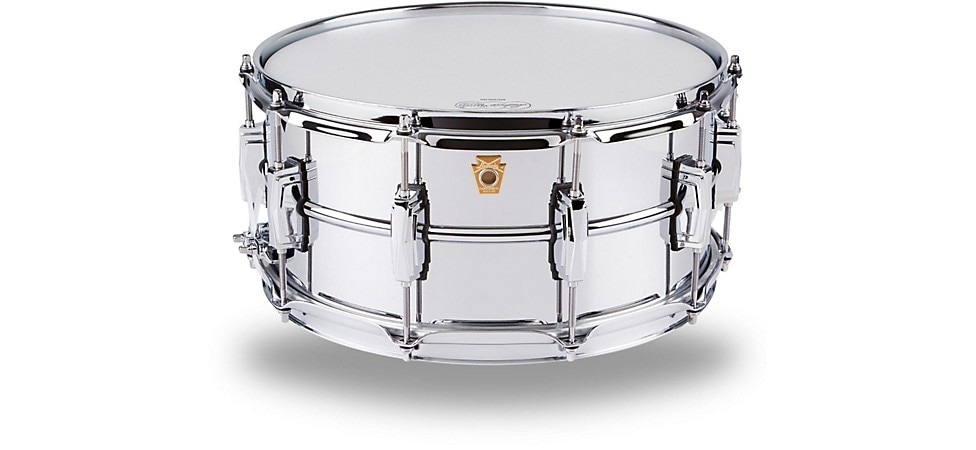
Shop Now: Ludwig Supraphonic Snare Drum
Now, it’s time to discuss the other Ludwig legend, the Ludwig Supraphonic. Like the Black Beauty, the Supraphonic snare drum has graced an almost incalculable number of recording sessions and live performances. However, the Supraphonic might have an edge with drummers who are fans of John Bonham. Bonzo preferred a 14x6.5" Supraphonic, because he wasn’t a fan of the bronze-shelled Black Beauty, which he felt sounded too dark. Instead, the Led Zeppelin drummer went for the drier sound and warm, rich and organically compressed swack of the Supraphonic’s chromed-plated aluminum shell.
There is also a third option—the somewhat confusingly labeled Ludwig Supraphonic Black Beauty. This version of the iconic snare features a 14x6.5" brass shell with black-nickel plating, chrome-plated hardware, Imperial lugs, triple-flanged hoops, a Ludwig P85 throw-off and Supra-Phonic 20-strand snare wires.
Slingerland Radio King Snare Drum
Why It’s Cool: The reissue of the Radio King marks the return of the classic Slingerland brand, bringing back vintage-accurate tone and appointments.
Things to Consider:
- Steam-bent, solid maple shell projects a full-bodied sound with excellent warmth
- 30-degree rounded bearing edge ensures greater contact between the head and shell
- Limited rerelease of a classic long sought after by collectors

Shop Now: Slingerland Limited-Edition 14x7" Ply Maple Snare Drum in Black Diamond Pearl
After its mid-century heyday and a lengthy hiatus, Slingerland is back with a limited reissue of one of its most sought-after vintage instruments, the Radio King snare. Packed to the brim with period-correct appointments, like its 3-point strainer and nickel-over-brass Stick Chopper hoops, it boasts a steam-bent, solid shell that’s fashioned from a North American maple plank—just like how the originals were made in the ’30s and ’40s. Inherently, it’s got all the punchy projection and luscious resonance you’d expect from a throwback gem of its caliber.
Orange County Drum & Percussion Bell Brass Snare Drum
Why It’s Cool: This very limited-run, timeless bell brass drum marks the return of the iconic Orange County Drum & Percussion brand.
Things to Consider
- Loud and proud tone from a hefty 3 mm bell brass shell
- Hand-ground edges, premium trick throw and die-cast hoops give you exceptional control
- Only 50 snares in production—get it while you can

Shop Now: Orange County Drum & Percussion Limited-Edition Bell Brass Snare Drum with Tube Lugs 14x6.5in
Having earned the trust of legends like Travis Barker and Adrian Young, OCDP is back and crackin’ with its Bell Brass 14x6" snare. Its 3 mm bell brass shell packs plenty of heft and attitude, projecting an aggressive yet musical character that’ll kick your grooves up a couple notches. With its offset mini tube lugs and extremely limited production run of just 50 drums, this OCDP snare is for those daring to be different.
Truly Vintage
Keep in mind that you just might find a real classic and legendary snare in our vintage drum collection. Be on the lookout for old-school Slingerland Radio Kings, Rogers Dynasonics, Leedy Broadway Standards and, well, just about anything from the ’50s, ’60s and ’70s that fires up your percussive imagination.
Crack, Swack and Own the Gig
There are so many excellent snare drums available, and just because we categorized a particular model one way doesn’t mean you couldn’t use it for just about any application. This guide is, well, just that—a guide. We hope it helps you make an easy and informed choice regarding which snare drum is just right for you and your music.
However, if you would rather follow your own path, let us help you with that, too. We've got a huge collection of snare drums here at Guitar Center. You’ll find numerous makes, models, sizes, shells and other features to consider. Have fun.







